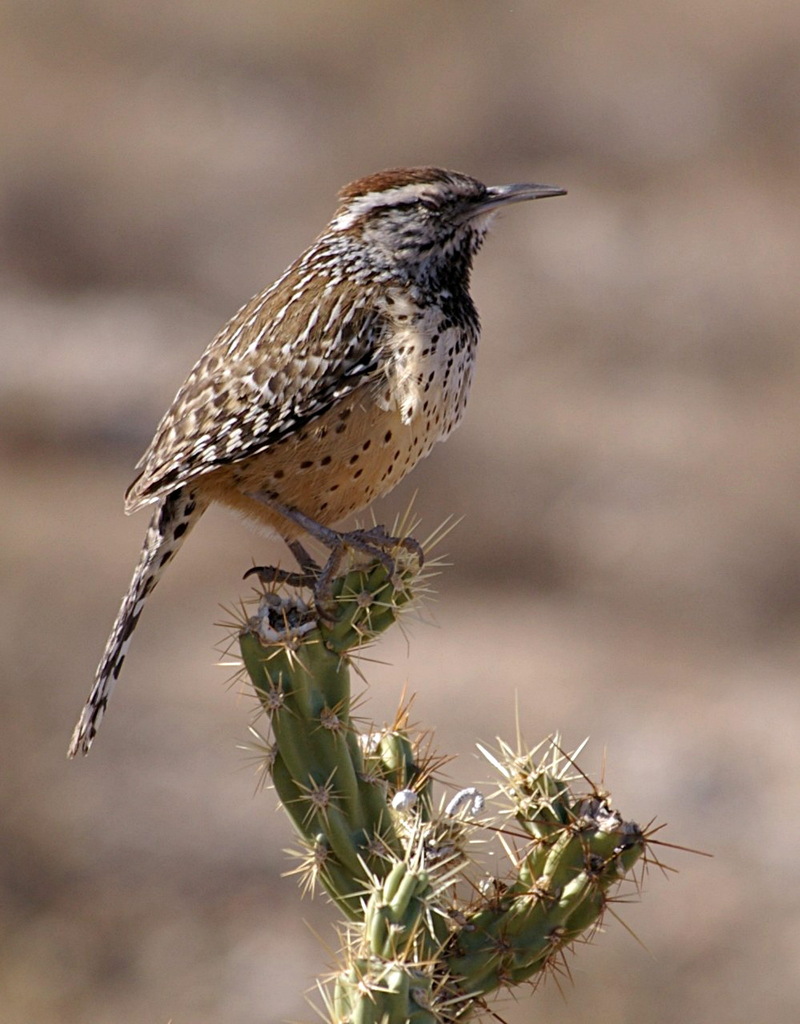Cactus Wren
From Wikipedia, the free encyclopedia
[Photo] Campylorhynchus brunneicapillus (Cactus Wren), photographed at the White Tank Mountains outside of Phoenix, Arizona. Date December 26, 2006. Author Mark Wagner
The Cactus Wren (Campylorhynchus brunneicapillus) is the largest North American wren, and is 18-23 cm (7-9 inches) long.
Unlike the smaller wrens, the Cactus Wren is easily seen. It has the loud voice characteristic of wrens. The Cactus Wren is much less shy than most of the family. Its marked white eyestripe, brown head, barred wings and tail, and spotted tail feathers make it easy to identify. Like most birds in its genus, it has a slightly curved bill. There is little sexual dimorphism. The Cactus Wren primarily eats insects, including ants, beetles, grasshoppers, and wasps. Occasionally, it will take seeds and fruits. Foraging begins late in the morning and is versatile; the cactus wren will search under leaves and ground litter and overturn objects in search of insects, as well as feeding in the foliage and branches of larger vegetation. Increasing temperatures cause a shift in foraging behavior to shady and cooler microclimates, and activity slows during hot afternoon temperatures. Almost all water is obtained from food, and free standing water is rarely used even when found (Udvardy 1994; Ricklefs 1968; McCarthey 2000).
The Cactus Wren is native to the south-western United States southwards to central Mexico. It is a bird of arid regions, and is often found around yucca, mesquite or saguaro; it nests in cactus plants, sometimes in a hole in a saguaro, sometimes where its nest will be protected by the prickly cactus spines of a cholla or leaves of a yucca. It mainly eats insects, though it will occasionally take seeds or fruits. It rarely drinks water, getting its moisture from its food.
The Cactus Wren forms permanent pair bonds, and the pairs defend a territory where they live all through the year.
It is the state bird of Arizona.
http://en.wikipedia.org/wiki/Cactus_Wren
| The text in this page is based on the copyrighted Wikipedia article shown in above URL. It is used under the GNU Free Documentation License. You may redistribute it, verbatim or modified, providing that you comply with the terms of the GFDL. |
|

